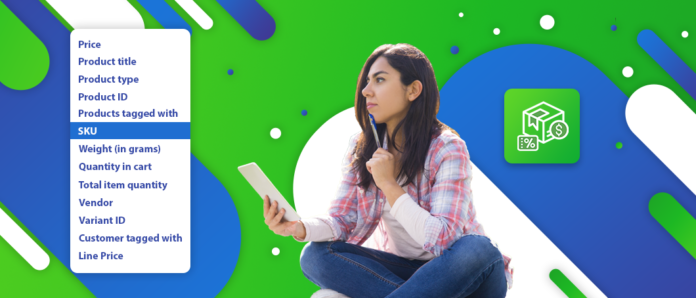To have an online store is a great responsibility and a burden for every merchant. You have to be in charge of a lot of things, such as the store’s inventory, financial processes, promotions, building the brand identity, and many others.
Most people may think that retailers just get profit from their stores, but it’s not as easy as it may seem. Running a business also means coming across some business expenses. Thus, you as a merchant need to have an opportunity to share these expenses with customers.
In the article, we’ll talk about ways to share business expenses with customers in Shopify.
Table of Contents [show]
How Not to Be Breakeven
None of the merchants want to operate at a loss. We wish to boost revenue and gain extra profit for each order, as well as increase the average order value. To do that and to share business expenses, retailers have to optimize product pricing with a number of the additional fees and charges.
In Shopify, the default functionality may not be enough, and you’ll have to go for 3rd-party solutions in order to achieve more pricing customization possibilities. Thus, for example, Order & Product Fees app by Mageworx allows merchants to add all fees to some products or the whole cart, product fee price can be set either fixed or percentage. Additionally, you can display or hide fees on the front-end only when specific conditions are fulfilled. In case the conditions are met, you’ll get the opportunity to share your everyday business expenses with the customers.
Fee Conditions Ideas to Fulfill
When setting fee conditions, merchants should choose from specific options. By creating the conditions for a fee, it’s possible to display fees depending on the product characteristics, the cart subtotal or to customize offers according to segmented lists of customers.
That allows merchants to charge extra fees in the cart, based on the combination of multiple conditional rules that you configure.
Price
Sometimes, retailers bear more considerable expenses for shipping or storing of low-priced offerings. So they might want to apply an extra fee for buyers who have purchased products worth less than, for example, $300. That means that the customers will have to cover additional fees for purchases below $300.
This product fee condition will be met only in case the products’ price is less than a determined one by the merchant.
For example, in the Cookbook Village Shopify Store, in case customers make orders for less than $25, shipping fees are included in the total price.
Product Title
Fees might be also assigned for specific product titles. This option can be useful if a retailer sells items, which are laid the highest tax or excise tax on.
For example, in the case of alcohol or cigarettes, they are taxable throughout the United States. It means extra expenses for merchants. So, if you set the condition that if a product title contains the word ‘Cigarette’ or ‘alcohol’, product fees will be assigned.
Product Type
The option is also can be connected with taxes. According to Wikipedia, state laws vary widely as to what goods are subject to tax. Many states provide exemptions for some specific types of goods and not for other types. Lists of what goods are taxable may be voluminous.
This condition can be especially vital for merchants with the stores in the following states with the highest local sales tax rate: Tennessee (9.47%), Louisiana (9.45%), Arkansas (9.43%), Washington (9.17%), and Alabama (9.14%)(Tax Foundation, 2019).
Product ID
Merchants have an opportunity to add a conditional fee for a particular product ID. Some goods can be gift-wrapped or provided by any other feature. Thus, to get extra charges for this service a retailer may set the following condition ― if the product ID is equal to the certain number, extra fees should be counted.
When the Product ID condition is met, the customer gets a fee.
Products Tagged with
Fees are assigned by a certain tagging.
Let’,s take a look at St.Frank Shopify Store. The total price of the product changes by size or the presence of a frame. So, extra charges will be paid when the condition ‘products tagged with frame’ is fulfilled.
In this case, the owner of the store gets extra charge for some extra features.
SKU
SKU helps identify the price, product options, and manufacturer of the merchandise as well as tracks inventory in your retail store. With the help of SKU, you can easily find out if a certain item is sold out fast or on the contrary is kept stocking.
That means it’s a chance to use this option as a condition in case, for example, some goods are sold out quickly, or need rush delivery, or should be packed. So, you can cover some ordinary business expenses with fees for the products with a specific SKU.
Weight
Weight is one more attribute that can be met as a condition. This option is closely connected to postal and shipping expenses. If you ship your offerings everywhere from east to west of the United States or any other country in the world, you need a solution that allows you to set different rates by weight.
The fee will be added in case the total weight exceeds the limit that you have defined.
Quantity in Cart and Total Items Quantity
If you want to share your packaging expenses with the customers,. you can configure conditions based on quantity in cart or total items quantity.
In this case, if buyers add more items to their cart or on the contrary less than you have established, they will have to pay some extra fees.
Variant ID
Fees are assigned to certain variants of goods. When you offer some products in different sizes, colors or materials, you may want to charge extra for a specific variation of the product.
Thus, in Marc Wenn Shopify Store, the same model of boots has different prices according to its various variants. This can be explained by the more significant demand for certain colors and materials. In this case, you get to set a condition based on such variant ID as color and material and get extra profit for them.
Customer Tagged with
Fees are assigned to specific customers. You can add a conditional fee for a publisher user role, or a particular user.
As an example, extended warranties can be charged from customers tagged with ‘wholesale’. Or, you can add expenses for specific features, such as engraving, for people with the name, which is printed on the product. There are a lot of variants on how to tag customers and get an extra fee.
Vendor
The same thing is to be done with ‘vendors’. By setting this condition, you’ll share your common business expenses with certain vendors.
If you have, for example, a clothing store, it’s natural that goods with the world brand names will be sold out faster and more often, so you can use it for your store and get some extra profit.
Line Price
Product-line pricing strategies aim to maximize the sales of different offerings by creating more complementary, rather than competitive, products. If you offer more than one product or service, consider the impact that one product’s or service’s price will have on the others.
This condition is appropriate for goods that encourage customers to buy add-ons or complementary products.
Wrap up
In the article, just several ideas about how it’s possible to use these conditions are given. You can do it in the way you like, to bring your pricing customization to a new level. Configure as many fee conditions as you want. The Shopify Order & Product Fees app is a trusted solution that can help you bring pricing customization to a whole new level by offering advanced conditions setup:




![Why Offer Gift Wrapping in Ecommerce? [Data-Driven] Gift Wrapping](https://www.mageworx.com/blog/wp-content/uploads/2020/01/26_blog_1060x454_Why_Offer_Gift_Wrapping_in_Ecommerce__Data-Driven-218x150.png)


![Why Offer Gift Wrapping in Ecommerce? [Data-Driven] Gift Wrapping](https://www.mageworx.com/blog/wp-content/uploads/2020/01/26_blog_1060x454_Why_Offer_Gift_Wrapping_in_Ecommerce__Data-Driven-100x70.png)
